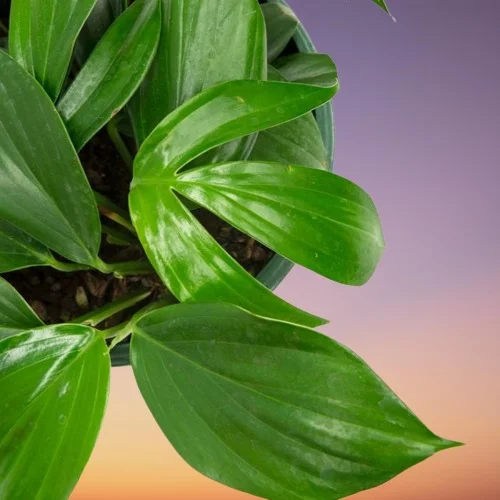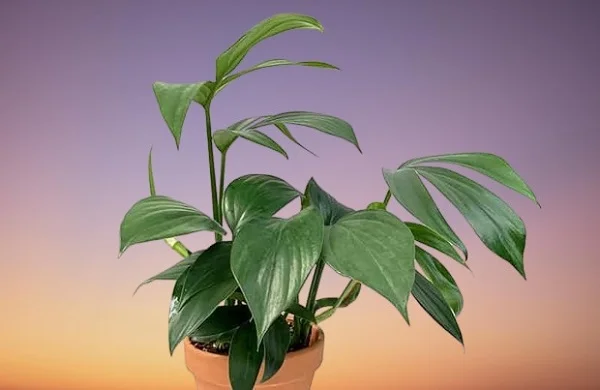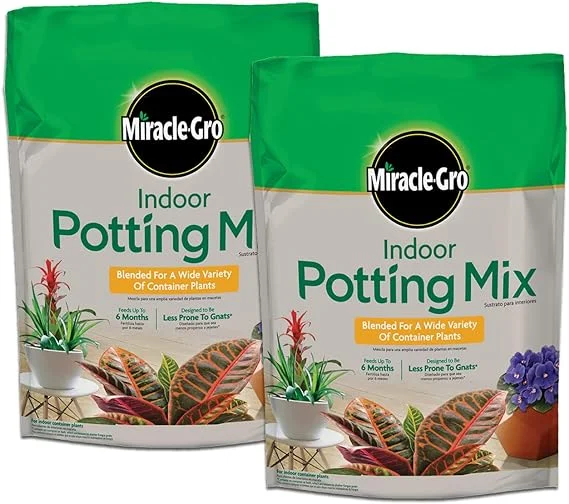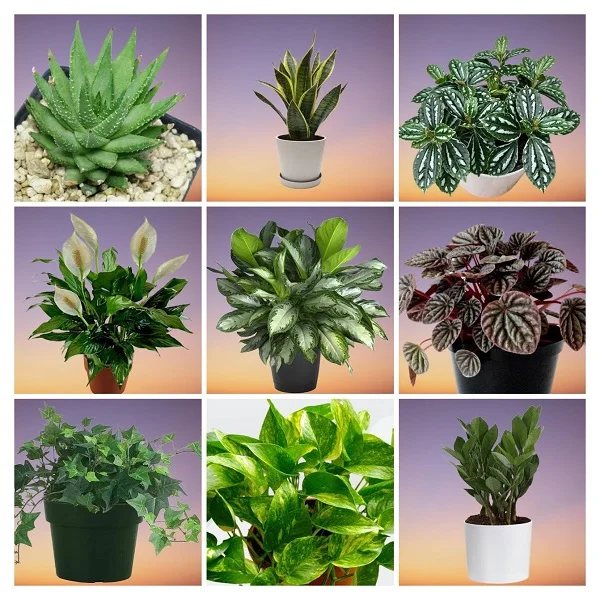Dragon Tail Plant (Epipremnum pinnatum) Indoor Care, Propagation & Common Problems
Some links in this post may be affiliate links
Epipremnum pinnatum (Dragon Tail Plant) thrives in medium to bright indirect light, warm and humid conditions, and moderately moist, rich, well-drained soil coupled with monthly feeding in spring and summer.
Dragon Tail Plant is a fast-growing climber and is part of the popular Pothos plants, meaning it is easy to care for, forgiving of neglect, and perfect for beginners.
Epipremnum pinnatum also called Centipede Tongavine is a rare sought-after plant on account of its versatility and the interesting leaves which resemble a dragon tail.
The young leaves have an elongated shape with a pointed end and a smooth margin. As they mature, they become deeply lobed which gives them the appearance of a dragon tail and hence the common name.
Dragon Tail Pothos leaves are glossy, dark-green on top and a lighter color on the undersides. They can grow to 1 foot long when mature.
Centipede Tongavine is a climber with thick fleshy stems which climbs by means of aerial roots. It can also creep along the soil surface.
Dragon Tail Plant can be grown in a hanging basket where the stems and leaves can cascade downwards beautifully or it can be provided with a climbing structure like a moss pole or a trellis.
Though it is sometimes called Dragon Tail Philodendron, Dragon Tail Plant is not a Philodendron. It belongs to the genus, Epipremnum. However, both genera; Philodendron and Epipremnum, belong to the same family, Araceae.

Botanical name: Epipremnum pinnatum
Synonmy: Epipremnum elegans
Family: Araceae
Common names: Dragon Tail Plant, Centipede Tongavine, Dragon Tail Pothos, Dragon Tail Philodendron
Origin
Epipremnum pinnatum also called Epipremnum elegans is native to Northern Australia through to Malaysia, tropical and southern China, Taiwan, Japan and Melanesia.
Size
Dragon Tail Plant can grow to a height of 30 feet in its natural habitat but indoors it will grow to about 3-5 feet. It is one of the best plants for a hanging basket.
Related Plants
Epipremnum pinnatum is similar to;
1. Epipremnum pinnatum 'Cebu Blue' whose leaves are silvery-blue-green, glaucous and textured.
2. Epipremnum pinnatum 'Baltic Blue' whose leaves are elongated, smooth, bluish-green and have no sheen.
Is Dragon Tail Plant toxic to pets?
As Wikipedia indicates, Epipremnum pinnatum like other species of the Araceae family is toxic to both humans and pets. The plants contains Calcium oxalate. If ingested it causes burning and swelling in the mouth and throat, vomiting, diarrhea and abdominal pains. Keep it from the reach of children and pets to avoid any mishap.
Dragon Tail Plant benefits
- Low-maintenance: It thrives on minimal care, perfect for busy plant owners.
- Fast-growing: It grows quickly with the right conditions, making it a rewarding plant.
- Versatile growth: It can be grown as a trailing or climbing plant.
- Gorgeous foliage: The young leaves start as solid green, then mature into dramatic, fenestrated (split) leaves.
Where to Buy
Are you looking to add Dragon Tail Plant to your plant collection? You may obtain these plants online from Etsy (Link to Etsy) or from Amazon (Link to Amazon).
How to Care for Epipremnum pinnatum Indoors
To care for Epipremnum pinnatum indoors, provide medium to bright indirect light, warmth of 15-280C, humidity of 50-55% and moderately moist, rich, well-drained potting mix coupled with monthly feeding in spring and summer.
Dragon Tail Plant requires repotting only when pot-bound. Regular pruning is necessary to keep the plant neat as well as rejuvenate growth. Keep reading for more on these growing conditions and how to provide them.

Light Requirements
How much light does a Dragon Tail Plant need?
A Dragon Tail Plant needs medium to bright indirect light. Keep it away from direct sunlight as it can result in scorching, causing brown marks on the leaves.
It can tolerate lower light but the growth will be much slower and leggy with long, stretched stems, yellow leaves and leaf drop. Therefore, move the plant to a brighter spot or instal grow lights where the natural lighting is not adequate.
Regularly rotate the pot to ensure that the plant receives light on all sides for balanced growth and to prevent leggy growth.
Watering
How often should I water Epipremnum pinnatum?
Water your Epipremnum pinnatum liberally in spring and summer while allowing the top 2-3 inches of soil to dry out between waterings. Keep the soil moderately moist and avoid overwatering as too much moisture can cause rotting, mushy stems, yellow leaves and leaf loss.
Reduce watering in fall and winter to keep the soil slightly moist as growth is minimal at this time. Do not leave the soil to dry out completely to avoid yellowing, curling and drooping leaves, and leaf drop.
Use water that is at room temperature to prevent cold shock which can result in stunted growth, yellowing and leaf fall. Only use water that is free of chlorine and other dissolved chemicals to prevent staining and browning of leaf edges.
Make sure that the pot has a drainage hole and the soil drain easily to prevent waterlogging as it can result in root-rot and eventual loss of the plant.
Temperature & Humidity
Dragon Tail Plant prefers a warmth of 15-280C; a room temperature that is comfortable for you is ideal for the plant. Keep it away from sources of drafts like AC units, drafty windows and doors, heat sources, stoves and others as they can cause reduced growth, yellowing and leaf drop.
Epipremnum pinnatum prospers in a humidity of 50-55%. However, if the air is too dry the plant will develop brown and shrivelled leaf tips. To up humidity, group the plants together, set the pot on a wet pebble tray or use a cool mist humidifier. Ensure good air circulation to depress fungal diseases.
Potting Mix
The best potting mix for Dragon Tail Plant should be a well-draining, nutrient-rich soil mix to prevent it from getting soggy while providing the required nutrients. Most Aroids soils and potting mixes designed for Pothos are ideal for this plant.
Fertilizer
How do you fertilize a Dragon Tail Plant?
Fertilize your Dragon Tail Plant with a balanced, water-soluble fertilizer every 3-4 weeks in spring and summer to encourage a lush growth.
Stop feeding in fall and winter as growth at this time is minimal and feeding at this time may lead to fertilizer burn and death of the plant. Avoid overfeeding as it can cause brown leaf tips.
Occasionally flush out accumulated salts by running a stream of water through the soil until it drains through the drainage hole. Allow the water to run for 5-10 minutes to clear most of the salts.
Repotting
Repot your Dragon Tail Plant at the beginning of the growing season (spring to early summer), only when pot-bound as it grows better when slightly pot-bound.
Use a rich, free-draining soil and a pot one size larger that has a drainage hole to prevent the soil from getting soggy as it can lead to root-rot. Check out these pots with drainage holes on Amazon.
Pruning & Grooming
Pruning Epipremnum pinnatum involves frequent removal of any dead foliage to keep the plant neat and also reduce pest and disease infestations.
Cutback the stems at the beginning of the growing season when they become straggly to rejuvenate growth. The foliage emanating from the pruning can be used to propagate new plants.
Occasionally damp-wipe the leaves with a soft cloth to get rid of dust and discourage pest and disease infestations.
Epipremnum pinnatum Propagation
Epipremnum pinnatum (Dragon Tail Plant) is propagated from stem cuttings which can be rooted in either soil or in water. The best time to propagate is at the beginning of the growing season (spring to early summer) when in active growth to promote establishment.
1. Propagating Epipremnum pinnatum from stem cuttings in soil
- Take a 4-6 inches stem cutting from a healthy plant. Ensure the cutting has at least two leaf nodes and some aerial roots.
- Strip off the lower leaf and insert the cutting in moist, rooting soil, ensure at least one leaf node together with the aerial roots are covered under soil.
- To hasten rooting, cover the set up with clear polythene to create a greenhouse effect; warm and humid conditions.
- Place the set up in a warm, well-lit place away from direct sunlight to prevent scorching.
- Maintain the soil moist through out until when the roots develop.
- The cuttings should root in about 2-3 weeks and the new plant will be ready to be transplanted in about 2-3 months.
2. Propagating Epipremnum pinnatum from stem cuttings in water
- Take a 4-6 inches stem cutting from a healthy plant. Ensure the cutting has at least 2-3 leaf nodes and some aerial roots.
- Strip off the lower leaf and place the cutting in a jar of plain water, ensure at least one leaf node is covered in water as well as the aerial roots.
- Place the set up in a well-lit spot and change the water every 5-7 days.
- The stem cutting should root in about 3-4 weeks. When the roots are about 2 inches long, start acclimating them to grow in soil.
- Acclimating the roots to grow in soil entails adding a little soil daily into the rooting jar over a period of time until when there is more soil than water in the rooting jar.
- The new plant is ready for transplanting when the roots have grown to about 4 inches long after which you can begin routine care.

Epipremnum pinnatum Problems & Solutions
Epipremnum pinnatum (Dragon Tail Plant) problems are yellow leaves, leaf drop, leggy growth, brown leaf tips & edges, pests and diseases among others. Keep reading for more on these problems and how to fix them.
Yellowing leaves
Why are the leaves on my Epipremnum pinnatum turning yellow?
The main causes of yellow leaves on your Epipremnum pinnatum are insufficient light, soggy soil, inconsistent watering, drafts, nutrients deficiency or aging.
How to fix it
Insufficient light: Position the plant in medium to bright indirect light or use a grow light if you do not have adequate light in your home.
Soggy soil: Use a free-draining soil and a pot with a drainage hole.
Inconsistent watering: Water when the top 1-2 inches of soil feel dry but do not allow the soil to dry out completely. Do not water on schedule.
Drafts: Keep the plant away from sources of drafts like hot air vents, AC units, hot surfaces, windy doors among others.
Nutrients deficiency: Feed the plant with a balanced, water-soluble fertilizer every 3-4 weeks in spring and summer.
Aging: This is a natural process. As the plant matures the older leaves turn yellow and drop off.
Leaf drop
Leaf drop on Dragon Tail Plant is due to inconsistent watering, soggy soil, too little light, drafts or use of cold water.
How to fix it
Inconsistent watering: Water when the top 1-2 inches of soil dry out but never allow the soil ball to dry out completely.
Soggy soil: Use a pot with a drainage hole and well-draining soil.
Too little light: Position the plant in medium to bright indirect light or use a grow light if you do not have enough light in your home.
Drafts: Keep the plant away from sources of drafts like windy doors, drafty windows, AC units, heat sources, hot air vents among others.
Use of cold water: Use water that is at room temperature to prevent cold shock.
Leggy growth
Leggy growth (elongated stems) on Dragon Tail Plant is due to overwatering and too little light.
How to fix it
Overwatering: Water when the top 1-2 inches of soil dry out. Reduce watering to maintain the soil slightly moist in fall and winter.
Too little light: Place the plant in a brighter spot or use a grow light if the natural lighting is not adequate.
Brown leaf tips & edges
Brown leaf tips on Epipremnum pinnatum are due to underwatering, soggy soil, dry air, or salts buildup.
How to fix it
Underwatering: Water the plant when the top 1-2 inches of soil dry out and never allow the soil to dry out completely for a prolonged period.
Soggy soil: Use well-draining soil and a pot with a drainage hole.
Dry air: To increase humidity, set the pot on a wet pebble tray, use a cool mist humidifier or group the plants together.
Salts buildup: Regularly get rid of accumulated salts by running a stream of water through the soil until it comes out through the drainage hole. Let it run for 5-10 minutes to remove most of the salts.
Pests
Common pests on Epipremnum pinnatum are spider mites and mealybugs which are prevalent in dry air conditions.
How to fix it
- Isolate the affected plant to prevent spread to other plants.
- Treat the infested plant with neem oil or insecticidal soap as recommended by the manufacturers.
- Regularly check underneath and between the leaves for these pests and carry out timely control measures.
- To depress the pests infestations group the plants together or set the pot on a wet pebble tray to raise humidity.
- Maintain good air flow to discourage the pests infestations.
Diseases
Dragon Tail Plant is prone to leaf spot disease and root-rot disease:
1. Leaf spot disease which is enhanced by overwet conditions coupled with poor air circulation. It is characterized by brown, soft leaf spots.
How to fix it
- Isolate the affected plant to prevent spread to other plants.
- Spray the affected plant with a systemic fungicide and ensure to follow the manufacturer's instructions.
- Avoid wetting the center of the rosette during watering; you may water from the bottom.
- Improve ventilation to ensure good air circulation for the plant.
2. Root-rot disease which is promoted by soggy soil. It is characterized by wlting, yellowing and browning of the leaves which is rapidly followed by plant collapse.
How to fix it
- Carefully, slip the plant out of its pot and inspect the roots. Brown mushy roots indicate root-rot.
- Cut the brown-black roots and treat the healthy roots with a copper-based fungicidal solution as recommended by the manufacturer.
- Repot the plant in fresh, well-draining soil and keep it dry for some time before resuming watering.
- Use a pot with a drainage hole to prevent the soil from getting soggy.
- Decrease watering in fall and winter as growth is minimal at this time, therefore, the plant does not need much water.
Conclusion
Dragon Tail Plant (Epipremnum pinnatum) is a hardy, beautiful, and easy-to-grow plant that thrives indoors with minimal effort. Whether you grow it as a trailing vine or climbing beauty, it will reward you with lush, vibrant foliage. By following these simple care tips, you can enjoy a healthy and thriving plant.
Frequently Asked Questions
1. How much sunlight does Dragon Tail Plant need?
Dragon Tail Plant thrives in bright indirect light, but can tolerate lower light for a short period.
2. How often should I water Dragon Tail Plant?
Water Dragon Tail Plant when the top 1–2 inches of soil are dry. Do not water on schedule.
3. Can Dragon Tail Plant grow in low light?
Yes. Dragon Tail Plant adapts well to moderate to low light, but grows best in bright indirect light.
4. Why are my Dragon Tail Plant leaves turning yellow?
Yellowing is often due to overwatering or poor drainage. Ensure the soil dries slightly between waterings.
5. How fast does Dragon Tail Plant grow?
Dragon Tail Plant has a fast growth rate, especially in warm, humid conditions.
You liked it? Share on social media.
Related Content
Amazon Associates Disclosure
Homeplantsguide.com is a participant in the Amazon Services LLC Associates Program, an affiliate advertising program designed to provide a means for sites to earn advertising fees by advertising and linking to amazon.com.





